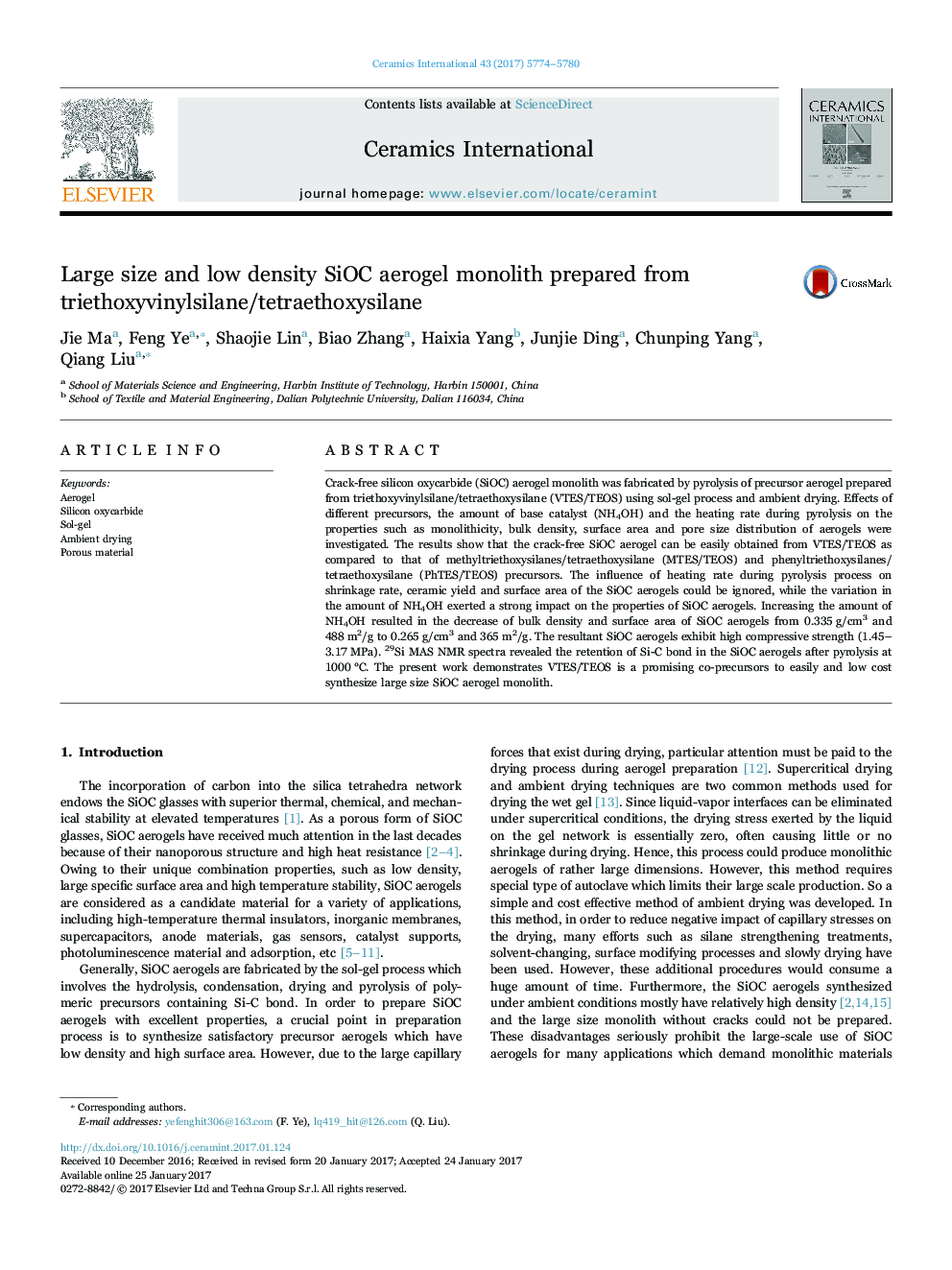| Article ID | Journal | Published Year | Pages | File Type |
|---|---|---|---|---|
| 5437592 | Ceramics International | 2017 | 7 Pages |
Abstract
Crack-free silicon oxycarbide (SiOC) aerogel monolith was fabricated by pyrolysis of precursor aerogel prepared from triethoxyvinylsilane/tetraethoxysilane (VTES/TEOS) using sol-gel process and ambient drying. Effects of different precursors, the amount of base catalyst (NH4OH) and the heating rate during pyrolysis on the properties such as monolithicity, bulk density, surface area and pore size distribution of aerogels were investigated. The results show that the crack-free SiOC aerogel can be easily obtained from VTES/TEOS as compared to that of methyltriethoxysilanes/tetraethoxysilane (MTES/TEOS) and phenyltriethoxysilanes/tetraethoxysilane (PhTES/TEOS) precursors. The influence of heating rate during pyrolysis process on shrinkage rate, ceramic yield and surface area of the SiOC aerogels could be ignored, while the variation in the amount of NH4OH exerted a strong impact on the properties of SiOC aerogels. Increasing the amount of NH4OH resulted in the decrease of bulk density and surface area of SiOC aerogels from 0.335 g/cm3 and 488 m2/g to 0.265 g/cm3 and 365 m2/g. The resultant SiOC aerogels exhibit high compressive strength (1.45-3.17 MPa). 29Si MAS NMR spectra revealed the retention of Si-C bond in the SiOC aerogels after pyrolysis at 1000 °C. The present work demonstrates VTES/TEOS is a promising co-precursors to easily and low cost synthesize large size SiOC aerogel monolith.
Related Topics
Physical Sciences and Engineering
Materials Science
Ceramics and Composites
Authors
Jie Ma, Feng Ye, Shaojie Lin, Biao Zhang, Haixia Yang, Junjie Ding, Chunping Yang, Qiang Liu,
